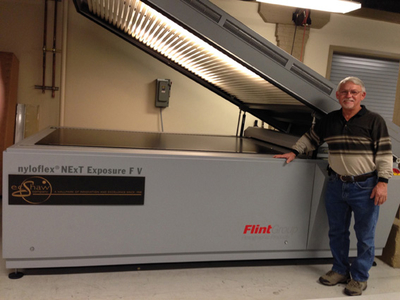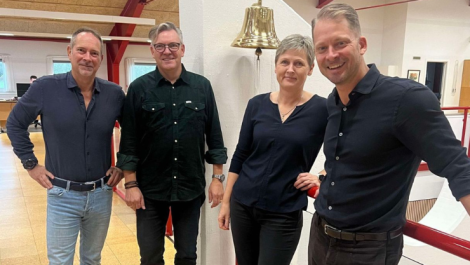John Ecklar, platemaking supervisor at E.C. Shaw Company with the new nyloflex NExT exposure unit
E.C. Shaw Company has recently installed a nyloflex NExT FV exposure system from Flint Group to offer its customers a more consistent printing plate.
The nyloflex NExT exposure technology utilises a high intensity UV-A LED light source to conduct rapid crosslinking of the photopolymer surface before oxygen inhibition can occur, resulting in a flat-top dot structure on the printing plate and a virtual 1:1 image reproduction from the digital file to the finished plate.
This technology does not require any additional consumable items or steps, so it can easily be incorporated into the existing digital workflow. The high level of UV emission leads to a significant improvement in the reproduction of the fine relief elements. When combined with high resolution surface screening, the resulting surface texture of the flat-top dots provides an optimal surface to enhance ink laydown, ink density and consistency in printing.
‘Besides consolidation of press consumables, printers also point out the savings on ink consumption, which is two fold,’ said Mr Grome, vice president sales and marketing.
‘Our customers found that they can either use a lower anilox volume with their same, standard base/varnish ratio, or they can further extend the ink with additional varnish, thereby stretching out the use of costly pigments,’ he explained.
White ink is often used in packaging as a background to cover the transparency of the film and hide the visibility of the contents. The ability of the plate to apply a smooth yet thin ink film with high opacity is of particular importance when printing with white, due to the high cost of the white pigment, titanium dioxide.
In the pre-press area, the exposure technology provides a more consistent plate due to the use of the UV-A LED light source, which is used to expose and crosslink the plate. The UV-A LED lights do not require warming up and the output is exceptionally stable over their long life, over 10,000 hours, much more so than conventional UV tubes with a 500 hour life span.






